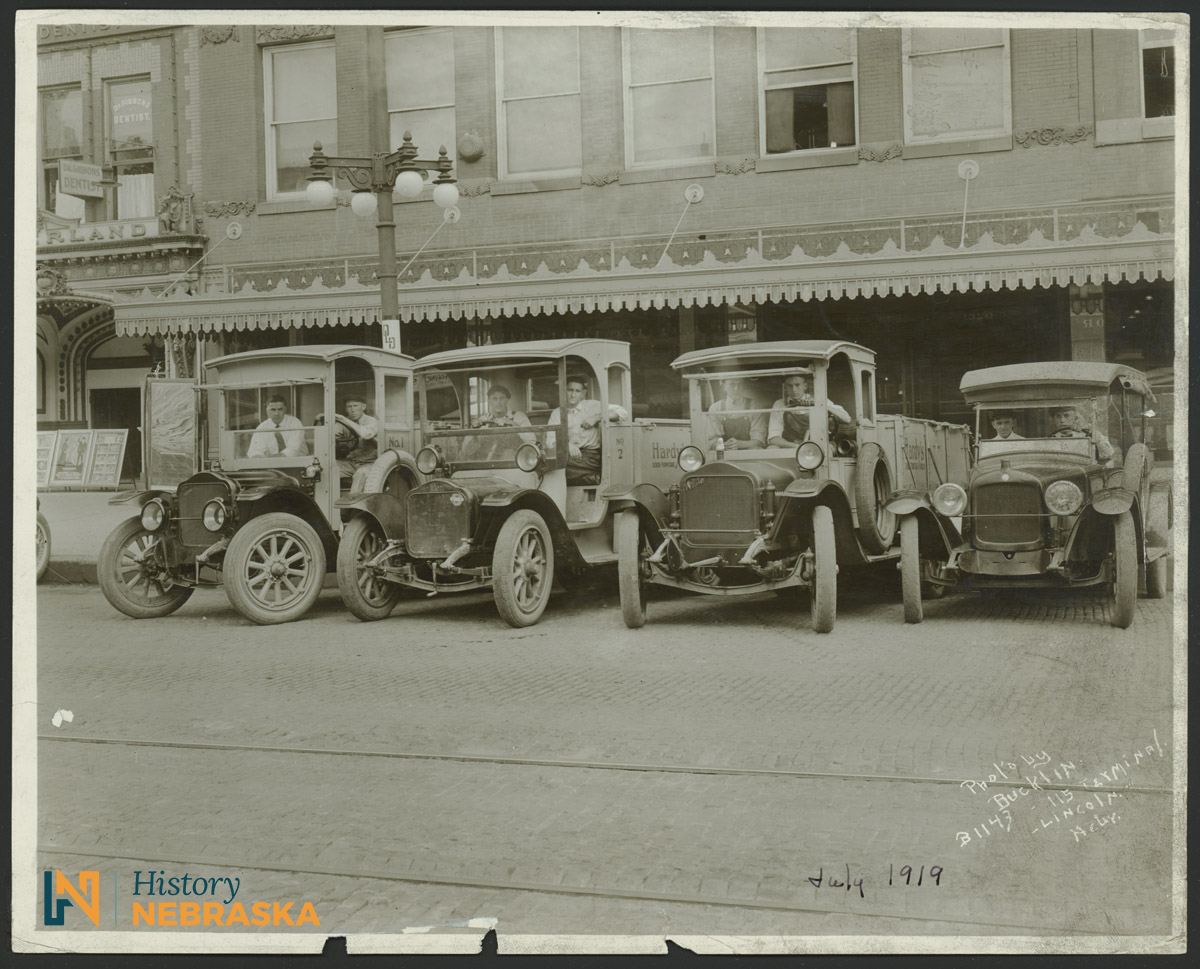The advent of cars radically changed personal and professional transportation for Nebraskans. The 1911 Nebraska State Journal cheered this revolution with an article about all the good that would come from it.

The advent of the horseless carriage revolutionized personal transportation for Nebraskans. The elimination of living, breathing horsepower similarly transformed the delivery business. A 1911 Nebraska State Journal article hailed the delivery truck as the great wave of the future, and listed numerous advantages over old dobbin.
A number of firms have now abandoned the horse as a factor in the delivery business and have now purchased auto delivery vehicles. The auto truck, to transport heavier material, has come into use. It is the belief of merchants and automobile men that the number will constantly increase. “Charles E. Stone gave some interesting figures to show how great would be the saving by the general adoption of trucks in place of horses.
A horse delivery wagon on the streets has an overall length of about 18 feet and occupies 90 square feet of area. To stable this outfit requires about 144 square feet. On the other hand, the motor wagon of like carrying capacity will average an overall length of about 10 feet or 60 square feet of area, whether on the street or in the stable, a saving of one-third on the street and 60 per cent in the stable, where high rental is considered.
In New York over 140,000 horses are used in daily trucking. Were this army of quadrupeds harnessed tandem fashion to a vehicle the first animal would be entering the city of Worcester, Mass., or Scranton, Pa., before the wheels of the vehicle to which they were harnessed started to turn out of New York City.
Probably the majority of these horses could be entirely dispensed with by a substitution of the motor vehicle. What such an elimination of the horse and its co-partner, the fly, would mean to the health of the community is almost beyond record, and the enormous saving to the taxpayer only the political powers can tell.
While these figures show a very decided saving for the motor as against the horse, we must consider the fact that with increased speed the motor vehicle is capable of more miles per day of travel, and as conservative estimates show that it is doing two-and-a-half times the work of the horse, there would be a saving of street space of no less than 73 percent. The same amount of work could be done with only about one-quarter of the street congestion, and four times the present volume of traffic could be accommodated.



